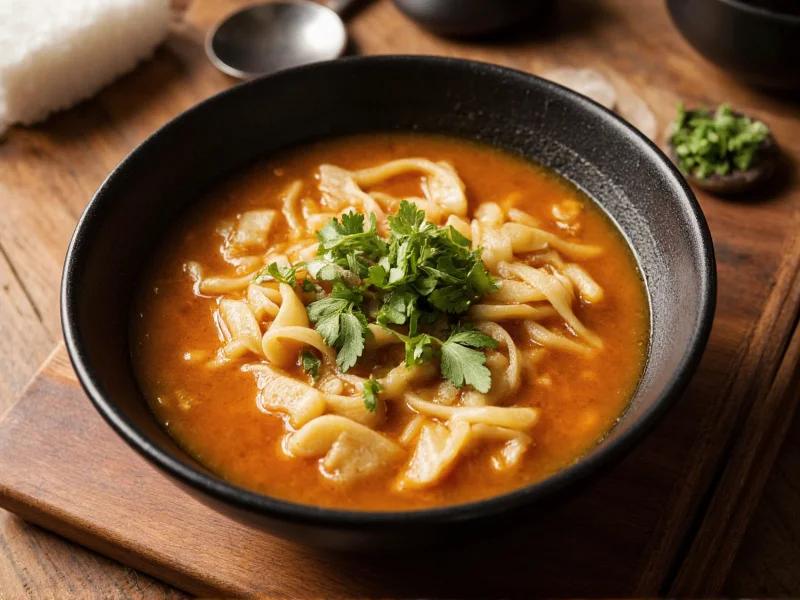When exploring what goes in the miso soup, it's important to understand both the traditional foundation and modern variations that have evolved. This beloved Japanese staple appears in nearly every traditional meal, serving as both comfort food and digestive aid. The magic happens when simple ingredients combine to create complex umami flavors that balance salty, sweet, and savory notes perfectly.
Essential Components of Authentic Miso Soup
The foundation of any proper miso soup recipe starts with quality ingredients. While regional variations exist across Japan, certain elements remain constant in traditional preparations. Understanding these core components helps recreate authentic miso soup at home while respecting its cultural significance.
| Ingredient | Traditional Type | Function | Substitution Options |
|---|---|---|---|
| Dashi | Kombu (kelp) & bonito flakes | Base flavor foundation | Shiitake mushrooms, instant dashi |
| Miso Paste | White (shiro), red (aka), or mixed | Primary flavor & probiotics | None (essential component) |
| Tofu | Silken or soft tofu | Protein element | None traditional, but some use egg |
| Wakame | Dried seaweed | Texture & ocean flavor | Nori, kombu (different texture) |
Regional Variations Across Japan
The specific ingredients found in the miso soup vary significantly depending on which region of Japan you're exploring. In eastern Japan, particularly around Tokyo, darker red miso paste creates a stronger, saltier broth. Western regions like Kyoto favor lighter white miso with sweeter notes. Hokkaido incorporates local ingredients like corn and potatoes into their miso soup variations.
Seasonal changes also influence what goes into miso soup. Spring versions might include fresh bamboo shoots and young vegetables, while winter preparations often feature heartier ingredients like root vegetables and mushrooms. Understanding these regional and seasonal differences helps appreciate the versatility of this seemingly simple dish.
Common Additions and Customizations
While traditional miso soup maintains its core ingredients, many home cooks and restaurants add supplementary elements to enhance flavor and nutrition. When examining what's typically in the miso soup at different establishments, you might find:
- Green onions - Added as garnish for fresh aroma
- Mushrooms - Shiitake or enoki for earthy notes
- Daikon radish - Thinly sliced for subtle sweetness
- Clams or fish - In coastal regions for seafood flavor
- Eggs - Whisked in for texture variation
These additions transform the basic miso soup recipe into something more substantial while maintaining the dish's fundamental character. The key to successful customization lies in balancing new elements without overwhelming the delicate miso flavor profile.
Proper Preparation Techniques
What makes miso soup authentic isn't just what goes in the miso soup, but how it's prepared. Traditional methods require careful attention to temperature and timing:
- Prepare dashi separately, never boiling miso paste directly
- Add miso paste after removing broth from heat (160-170°F ideal)
- Use a special mesh spoon (miso koshiki) to dissolve paste smoothly
- Add delicate ingredients like wakame and tofu last
- Serve immediately to preserve probiotic benefits
Mistakes to avoid include boiling the miso (which kills beneficial bacteria and alters flavor) and adding ingredients in the wrong order. The proper sequence ensures each component maintains its optimal texture and flavor contribution.
Nutritional Benefits of Traditional Ingredients
The components found in the miso soup offer significant health advantages beyond their culinary appeal. Miso paste contains probiotics that support gut health, while wakame provides essential minerals like iodine and calcium. Tofu contributes complete plant-based protein, and the dashi base offers subtle umami without excessive sodium compared to Western broths.
Research shows regular consumption of traditionally prepared miso soup correlates with various health benefits, including improved digestion and potential cardiovascular support. The fermentation process in miso production creates bioactive compounds that may contribute to these positive effects.
Cultural Significance in Japanese Dining
Understanding what goes in the miso soup requires appreciating its role in Japanese culinary tradition. Miso soup represents one of the five essential tastes in Japanese cuisine and traditionally appears as part of the ichiju-sansai (one soup, three side dishes) meal structure. The specific ingredients often reflect seasonal availability and regional specialties, connecting diners to their environment through food.
In Japanese households, the miso soup recipe often passes through generations with subtle variations that identify family traditions. The care taken in preparing what goes into miso soup demonstrates respect for both ingredients and those who will consume them.
Troubleshooting Common Miso Soup Issues
When recreating traditional miso soup at home, certain challenges frequently arise related to the ingredients in the miso soup:
- Grainy texture - Caused by improper dissolving of miso paste; solution: use mesh spoon and proper temperature
- Bitter flavor - Results from boiling miso; solution: always add miso off heat
- Separation - Occurs when miso isn't fully incorporated; solution: gradual addition while stirring
- Overpowering saltiness - Too much miso or wrong variety; solution: adjust type and quantity
Mastering these troubleshooting techniques ensures your miso soup maintains the delicate balance that makes this dish so special.
Modern Interpretations While Respecting Tradition
Contemporary chefs continue exploring what can go in the miso soup while honoring traditional foundations. Some innovative but respectful variations include:
- Adding seasonal vegetables like pumpkin in autumn
- Incorporating local mushrooms in regional adaptations
- Using different miso blends for complex flavor profiles
- Creating vegetarian versions with mushroom-based dashi
The key to successful innovation lies in maintaining respect for the dish's essential character while thoughtfully introducing complementary elements. The best modern interpretations enhance rather than obscure the traditional miso soup experience.











 浙公网安备
33010002000092号
浙公网安备
33010002000092号 浙B2-20120091-4
浙B2-20120091-4